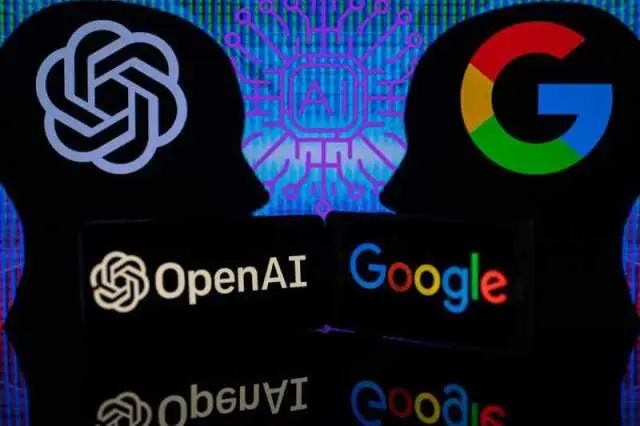Since the beginning of 2025, China has made rapid progress in artificial intelligence (AI): In January, DeepSeek and its R1 inference model debuted; Alibaba's Qwen model followed closely; and since July, a series of models, including Moonshot, Z.ai, and MiniMax, have emerged.
These models have attracted media attention. The Wall Street Journal published an article on August 12th, stating that a series of Chinese AI models are available for free download and modification. This model, often referred to as open source, is driving the widespread adoption of Chinese AI technology worldwide.
"China's leading position in open-source AI has shocked Washington and Silicon Valley," the article noted. China's ambition to establish its open-source AI models as a global standard has alarmed American businesses and policymakers. They view China's progress as a "threat," fearing that American models could be surpassed, and are actively working to address it.
On August 13, the Hong Kong-based South China Morning Post published an opinion piece stating that leadership in the next era of AI will no longer depend on who has the best model, but on whose model is ubiquitous. The article also compared the AI models of China and the United States: Currently, the United States seeks to dominate AI through invention and control, while China seeks to exert influence through application and distribution.
• "Pressure in Silicon Valley and Washington"
The Wall Street Journal stated that China's open-source AI models are putting pressure on American companies that cling to proprietary models. In early August, OpenAI, the developer of ChatGPT, released its first open-source model, gpt-oss.
The article stated that technology history shows that many industries, initially characterized by fierce competition, often evolve into monopolies or oligopolies dominated by a few players. Examples include Microsoft's Windows operating system, Google's search engine, and iOS and Android systems. History also shows that industry winners are not always the most technologically advanced players; ease of use and flexibility are equally important, which is why China's progress in open-source AI is causing concern in the United States.
In July of this year, the Trump administration's AI action plan stated that open-source models "could become global standards in certain commercial sectors and academic research." The report calls on the United States to build a "leading open source model based on American values."

According to reports, currently, open source AI offers little reward for winners, as companies invest hundreds of millions of dollars in developing models without receiving direct returns. However, researchers have long championed the open source approach because it allows users to review code and suggest improvements, accelerating the development of emerging technologies.
However, the Wall Street Journal notes that Chinese officials are encouraging open source research and development not only in AI, but also in operating systems, semiconductor architecture, and engineering software. Su Lian Jye, principal analyst at Omdia, a research firm specializing in AI, believes that "fearing a US technological blockade, China is supporting open source projects as a strategic backup and emergency resource."
The report notes that this year's US-China tariff war demonstrated that both sides can leverage their respective industrial advantages, such as Nvidia chips in the US and rare earth minerals in China, to extract concessions from the other. Consequently, US officials worry that if Chinese AI models become globally dominant, China will find a way to gain geopolitical advantage.
In the commercial sector, open source AI models are reportedly being adopted by businesses. Many clients favor open source models because they can be freely adapted and deployed on internal systems, protecting sensitive information.
Overseas Chinese Banking Corporation (OCBC), one of Southeast Asia's largest banks, has developed approximately 30 internal tools using open-source models, including Google's Gemma model for document summarization, the Qwen model for code development assistance, and DeepSeek for market trend analysis. The bank stated that it avoids locking in a single model, monitors new model releases, and readily switches to new ones. It also prefers models familiar to developers for technical support.

Alibaba's Qwen3 model on social media
The Wall Street Journal reported that in China's fiercely competitive artificial intelligence industry, companies are expanding their competition to open-source models, with all companies in recent months vying for user adoption and public recognition through open-source models.
Shanghai-based tech analyst Charlie Chai stated, "Chinese companies often prioritize user retention over immediate revenue."
Other analysts note that startups' window of opportunity to attract users is short-lived, and that large tech companies are generally better at leveraging their large user bases to provide relevant services. Andrew Ng, head of the Silicon Valley startup DeepLearning.AI, wrote in a recent blog post: "This Darwinian struggle for survival will lead to the demise of many existing players, but fierce competition will also breed powerful companies."
• China and the United States: Who will be the winners in the next era of AI?
"Both China and the United States have ambitious AI visions, but beneath the surface lie strategic differences," the South China Morning Post analyzed, arguing that the United States aims to dominate the field through invention and control, while China seeks to exert influence through application and distribution. In the competition for AI leadership, the United States focuses on developing AI capabilities, while China focuses on infrastructure.
The article notes that the US playbook in AI is familiar: for decades, US hegemony has operated on a complex engine: public R&D fueled private commercialization, which in turn established platform monopolies and expanded globally.
Now, American AI companies are repeating this formula. While some US companies have developed leading AI technologies, these models remain inaccessible, unaffordable, or inflexible in many parts of the world.
China is taking a different path. The article states that in recent months, the number of AI models and agencies in China has surged, embedded in workflows from logistics to finance. For countries in the Global South, these models offer affordability, localization, and deployment freedom.
The South China Morning Post concludes that, in many ways, China is treating AI much like high-speed rail or 5G, viewing it as national infrastructure with export potential. This strategic framework fosters widespread adoption, soft power, and the development of standards, all without Western interference.
The article analyzes that these strategic differences are reflected in various aspects of the two countries' AI initiatives. For example, the Trump administration's AI action plan emphasizes ideological neutrality and seeks to tighten export rules. In contrast, China sees itself as an AI convener, calling for the establishment of a global AI cooperation agency to extend China's Belt and Road Initiative into the digital realm.
"The United States remains a leader in chip design, foundational models, and elite research, but the next era of AI leadership will be determined not by whose models are the best, but by whose models are ubiquitous," the article reiterates, reiterating that saturation is more important than hegemony in this AI race. “Winners don’t dominate the finish line; they pave a path that others recognize.”




